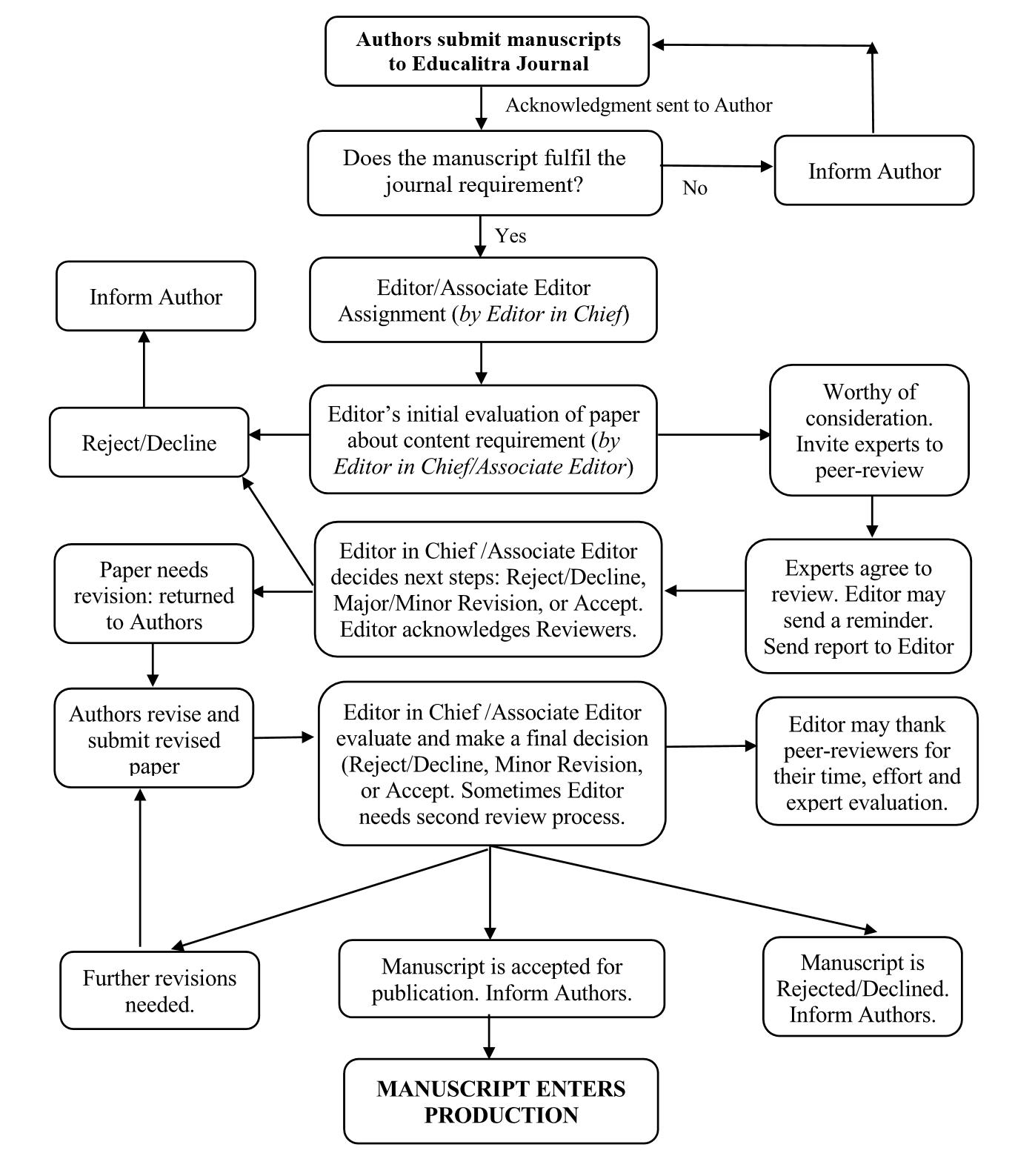Peer Review Process
Educalitra: English Education, Linguistics, and Literature Journal maintains high standards of peer review while ensuring an efficient process. All research articles published in Educalitra undergo a thorough peer review. The key characteristics of this process are as follows:
1. Double-Blind Review: The journal employs a double-blind peer review system, meaning that both the reviewers' and the authors' identities remain anonymous throughout the process.
2. Qualified Reviewers: Each manuscript is reviewed by at least two suitably qualified experts in the field. Typically, one reviewer is an external expert, and the other is an editor from the journal.
3. Publication Decisions: The final decisions regarding publication are made by the Editors in Chief based on the reviews and recommendations provided by the reviewers.
4. Editorial Board Insight: Members of the international Editorial Board provide insight, advice, and guidance to the Editors-in-Chief, assisting in decision-making on specific submissions.
5. Administrative Support: Managing Editors and Editorial Assistants offer administrative support, ensuring the integrity of the double-blind peer review process and delivering rapid turnaround and maximum efficiency for authors, reviewers, and editors.
6. Plagiarism Screening: All submissions are screened for plagiarism using Turnitin before the peer review process begins.
7. Efficient Timeline: The initial review process typically takes 1-2 weeks. The entire review, editing, and publication preparation process usually takes 3-4 months.
Peer Review of Referred Papers: Editors of Educalitra will evaluate the initial review before deciding whether to accept, reject, or request revisions based on the reviews and editorial insight. Editors may seek additional reviews if necessary. Authors will be informed if further review is needed.
Peer Review of Novel Submissions: Articles submitted directly to Educalitra will undergo a double-blind review by at least two appropriately qualified experts selected by the Editor in Chief or Managing Editor. The Editor in Chief or a designated member of the Editorial Board will then decide whether to accept, reject, or request revisions based on the reviews and comments received.
Editors will determine whether each submission reports well-conducted research with conclusions supported by the data presented in the paper. While priority assessments will not influence the decision-making, all papers must contribute an incremental or novel addition to the literature.








